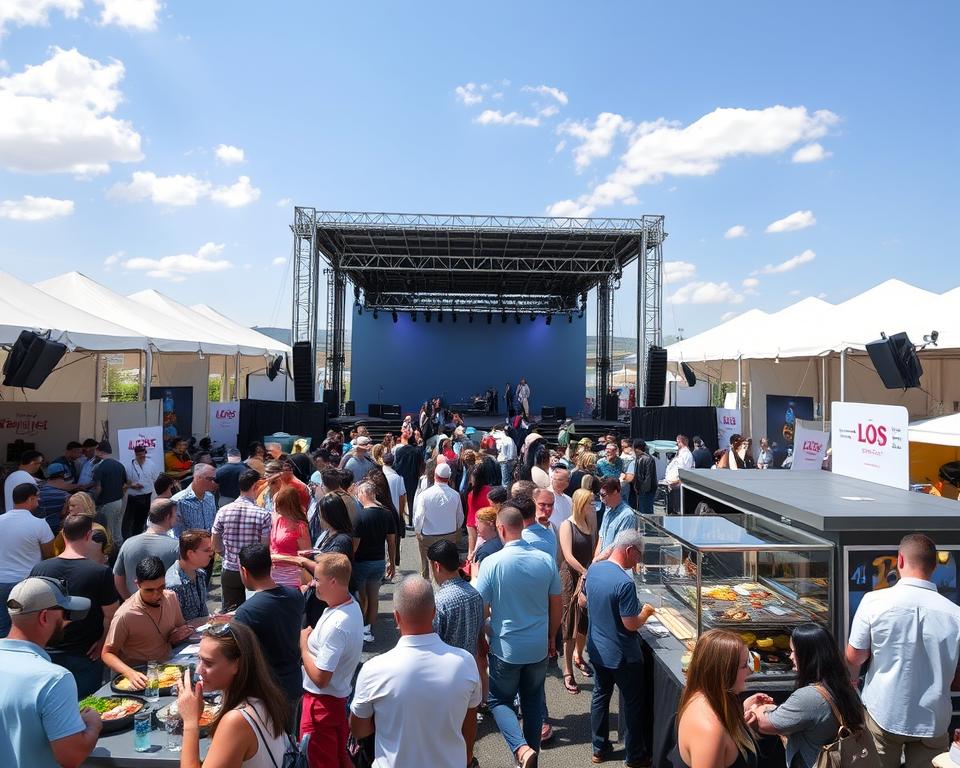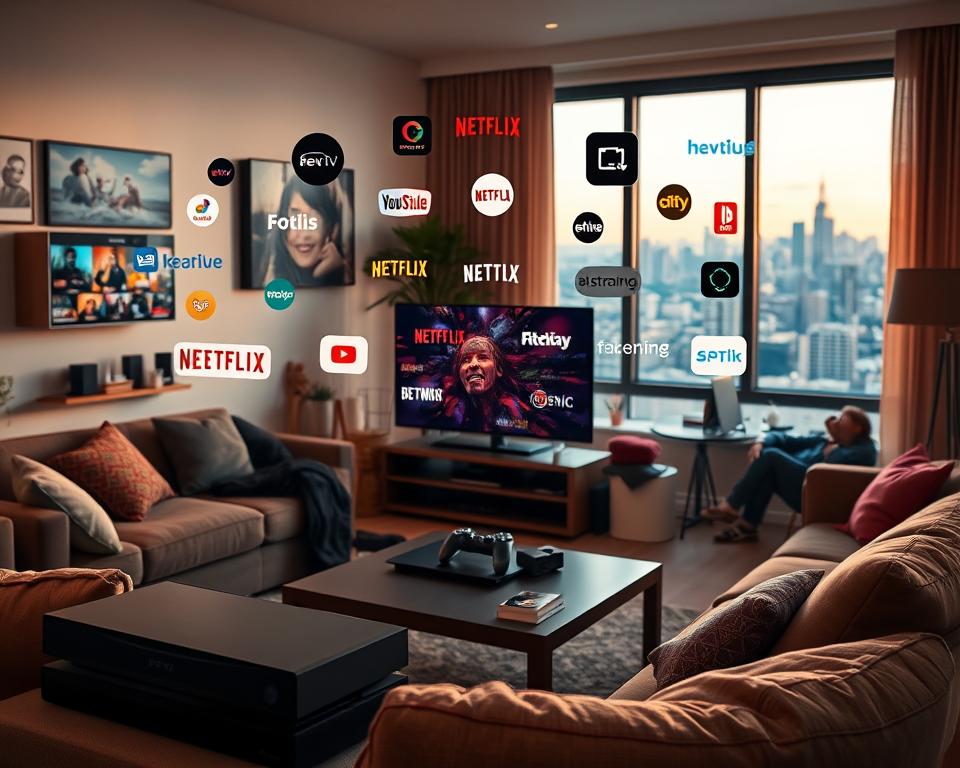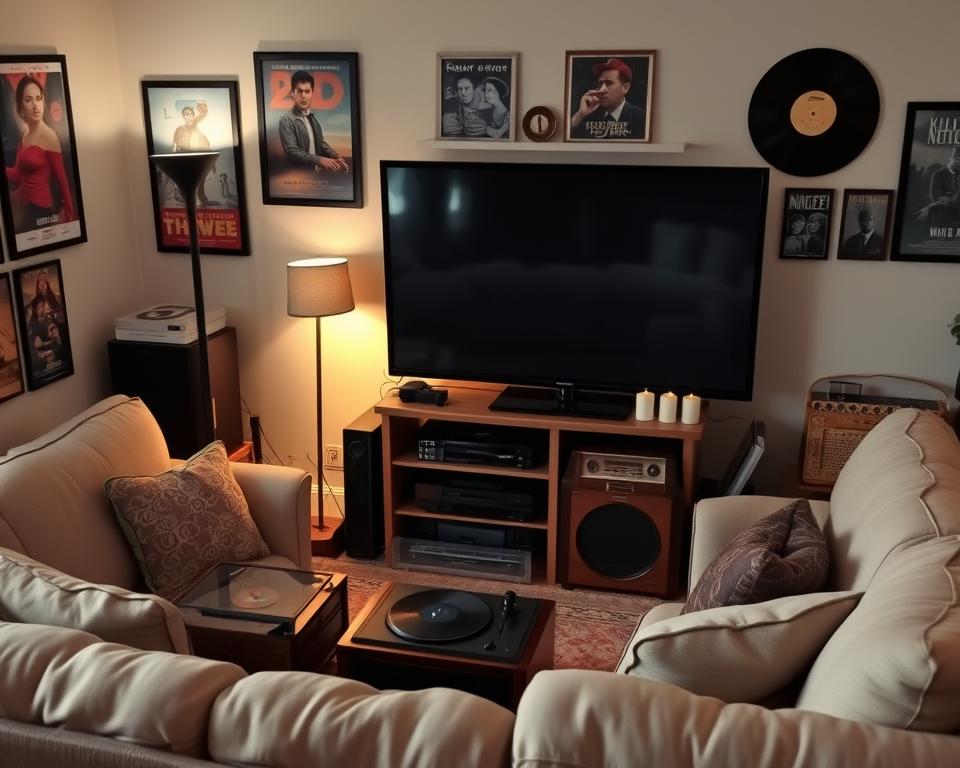Anúncios
Entertainment checklist starts here with clear steps so you can pick acts that match your goals.
You’ll get practical tools, real cost ranges ($30–$60 per person), and typical RSVP notes (about 60% say “yes” for cocktail invites). This short guide shows you trends for 2025 and examples you can use now.
Expect straightforward advice on vision, budget, research, quotes, and contracts. You’ll learn how word of mouth, search engines, and listings affect venue choice and where to check lead times for weddings and kids’ parties.
We’ll cover logistics like A/V, power, staging, load-in, run of show, cueing, accessibility, tipping norms, and staffing so your event feels planned, not improvised.
Before you book, verify permits and venue policies with official sources. Use this guide to move from idea to booking with confidence and measurable results.
Principais conclusões
- Use the guide to match performers to your event goals.
- Budget with realistic per-person ranges to avoid surprises.
- Check venue tech needs early: A/V, power, staging.
- Plan run of show and cueing so vendors sync with the timeline.
- Confirm permits, accessibility, and tipping expectations ahead of time.
Introdução
Event planning starts with a clear timeline and a simple list of priorities to keep things on track.
In 2025 attention spans are shorter and tech is everywhere. You should blend live acts with light digital touches like song requests or shared photos. Popular bands and top DJs often book more than a year ahead. Kids’ party performers usually need 4–6 weeks’ lead time.
Start early so you protect your date and confirm venue A/V, access times, and load-in details. Small details—parking, sound checks, and access—can make or break an event, so put them in one place.
Use a simple planning checklist to sequence tasks from research to run of show. A clear list helps guests see smooth transitions and boosts interactivity. Verify permits, insurance, and venue rules with reliable sources and keep confirmations handy the week of your event.
- Blend live and digital for short attention spans.
- Book early to secure popular acts and your date.
- Document details like access, parking, and sound checks.
Set the vision and budget before you book anything
Start with a one-line vision—for example, “elegant cocktail hour with acoustic guitar” or “all-ages dance party with interactive MC.” That simple sentence will guide your choices and speed up planning.
Define the atmosphere and guest preferences
Identify your guests by age and preferences, then pick options that match their energy. Close-up magicians suit mingling crowds. A live band keeps a high-dance reception moving.
Plan your event budget with entertainment at 15-25%
Set a total budget and allocate about 15–25% to entertainment. Track travel, lighting, and backline so you don’t exceed limits.
Map guest count, event type, and theme to your plan
Estimate per-person costs ($30–$60 typical for parties) to size the plan to your guest count. For a wedding, prioritize ceremony music, reception DJ or band, and MC duties.
- List must-haves vs nice-to-haves so you can trim if quotes climb.
- Pick a theme that supports the experience, not just décor (e.g., speakeasy → jazz trio).
- Document the one-page plan: vision, guest count, event type, theme, target budget, and three options to research next.
Entertainment checklist: research, outreach, and booking
Kick off research with a one-page brief that lists date, guest count, venue, and must-haves. This makes it easy to compare proposals and keeps vendors answering the same questions.
Shortlist options using venue referrals, recent reviews, and full-length videos so you can judge stage presence and audio quality.
- Note booking windows: for weddings, reach out as soon as you lock date and venue; for kids’ parties, plan 4–6 weeks ahead.
- When requesting quotes, give date, location, guest count, set length, and any special requests. Ask if early load-in affects price.
- Compare packages apples to apples—check sound, lights, mics, MC duties, and rider items like travel or backline.
- Confirm backups for illness and what the vendor will do if they can’t perform, so you avoid last-minute scrambling.
Secure a written contract that lists pricing, payment schedule, performance start/end times, setup/strike windows, cancellations, and weather plans. Request insurance certificates if the venue requires them and confirm permits for amplified sound.
Keep all correspondence in one folder so your planning checklist ensures miss no critical steps. Evaluate how djs take requests and how magicians adapt material for age groups before you sign.
Lock the venue and tech details that make or break experiences
Confirming technical and access details with the site removes day-of surprises. You want a clear, written list of what the venue provides and what your vendors must bring.
Venue essentials you must verify
Check A/V capabilities, access times, and loading zones. Note parking capacity and any costs for vans or trucks.
Verify maximum capacity for your room layout. Confirm ADA routes for guests and staff. Ask for official venue rules in writing.
Translate technical riders into a single checklist
Match artist riders to power needs, stage size, sound, monitors, microphones, and basic lighting. Note which equipment the venue owns and what you must rent.
- Request a venue A/V spec sheet and mark in-house gear.
- Clarify who runs sound — the venue or your vendor — and who supplies extension cords and gaff tape.
- Schedule an on-site tech or A/V operator if the event uses complex equipment.
Sound checks, rehearsals, and rain plans
Block a sound-check slot and a quiet room for the run-through. Test walk-on music, MC mics, and video playback.
If your event is outdoors, document the rain call timeline, tent specs, and noise curfews. Confirm who makes the final call and how you’ll notify guests and staff.
Dica: Share a simple site map with vendors so everyone arrives at the correct door with the right gear. Double-check official venue policies before final payment.
Build a realistic event timeline and room flow
Map the night into three clear acts—mixing, dining, and dancing—so the timeline is easy to follow and share. This simple frame guides your planning and keeps vendors aligned.
Cocktail hour, dinner, and dancing: segment the schedule
Outline the major segments first: cocktail arrivals, seated meal, speeches, and headline dancing. Anchor entertainment cues to those blocks so transitions feel natural.
Include a five- to ten-minute buffer between segments for room resets and mic checks. That small time buffer stops a short delay from cascading into a missed toast.
Coordinate with vendors and staff using a shared run of show
Share a one-page run of show with entertainers, caterer, venue manager, and photographer. Name a single point person to call cues and handle last-minute changes.
- Use shorter sets during arrival to keep energy up, longer sets for later dancing.
- Place high-impact moments—first dance or featured performance—after the meal so guests focus.
- Confirm vendor arrival times separate from guest arrivals to avoid gear moving through mingling crowds.
- Add aisle widths and seating notes for accessibility so every guest can enjoy the event.
Dica: Hold an A/V run-through when possible and send the final schedule to all partners at least 48 hours before the event.
Day-of execution, guest experience, and contingency plans
Plan the day so every vendor, volunteer, and staff member knows where to be and what to do. That simple step reduces surprises and gives you time to focus on guest needs.

Arrival, setup, and cueing
Assign a lead for vendor check-in, a tech point for A/V, and a floor captain for guest flow. Each person should have a printed contact list and arrival windows.
Confirm parking, load-in routes, and green room space. Print the run of show with clear cue lines for lights and music.
RSVP follow-up, seating, accessibility, and signage
Call or text remaining RSVP holdouts; set a few flexible tables for late attendees. Mark ADA routes and seating with visible signage.
Dica: Put staff at decision points so guests find restrooms, accessible seating, and assistance quickly.
Backups for weather, no-shows, and tech issues
Keep a contingency kit with spare XLRs, backup mics, power strips, tape, and a small tool set. Have a standby playlist and a short MC segment ready to fill time if a performer runs late.
Decide who makes the rain call and when. Prepare tip envelopes for entertainers and staff (children’s party performers $15–$20; larger vendors like chefs $50–$100) and document final payments so contracts match records.
- Print one-page run of show and hold a 30-minute huddle with all staff and services.
- Confirm arrival time windows and verify water and green room for performers.
- Keep backups for common issues and a clear chain of command for decisions.
Real-world details that people forget (but you won’t)
You can prevent common slip-ups with a few numbers and concrete reminders. Below are practical items to add to your plan so the day runs smoothly.
Tipping & gratuities
Budget tips early. Children’s entertainers usually expect $15–$20 each. For larger wedding pros, plan $50–$100 per vendor like chefs, depending on scope.
Invites and attendance
Cocktail invites tend to net about 60% yes. Invite accordingly and give your caterer final counts a few days before the party.
Vendors and must-have services
Match your vendor mix to the vibe: djs and magicians for energy, plus photo booths, caterers, and security for logistics. Ask caterers about food quantities and dietary options—vegetarian, vegan, and gluten-free—before printing menus.
- Use digital invitations (Evite, Paperless Post, Greenvelope, Minted) and send a one-week reminder.
- If you use balloons, check local rules and dispose of them properly; many areas ban releases.
- For outdoor evening events, plan lighting and rent heaters so guests stay comfortable.
- Keep a printed checklist for setup and strike to return rentals on time and avoid fees.
Dica: Verify venue policies and local regulations early; word of mouth, search, and listings often drive vendor choices, so document your sources.
Conclusão
Before you step away, capture the day’s decisions and make a strong, simple habit of saving notes, timelines, and vendor contacts.
Keep your planning checklist and run-of-show as a template. Store one folder per venue with signed contracts, insurance, and equipment notes so you can reuse what worked.
After the event, collect guest feedback and compare actual costs to your budget. Note which vendors and staff boosted the guest experience and which details need fixes.
Dica: Book annual dates early, keep a short list of go-to venues and questions, and verify permits, local rules, and insurance with official sources so your next party starts ahead and your planning is less stressful.



